Głogów 2022-02-27
PKP Głogów.
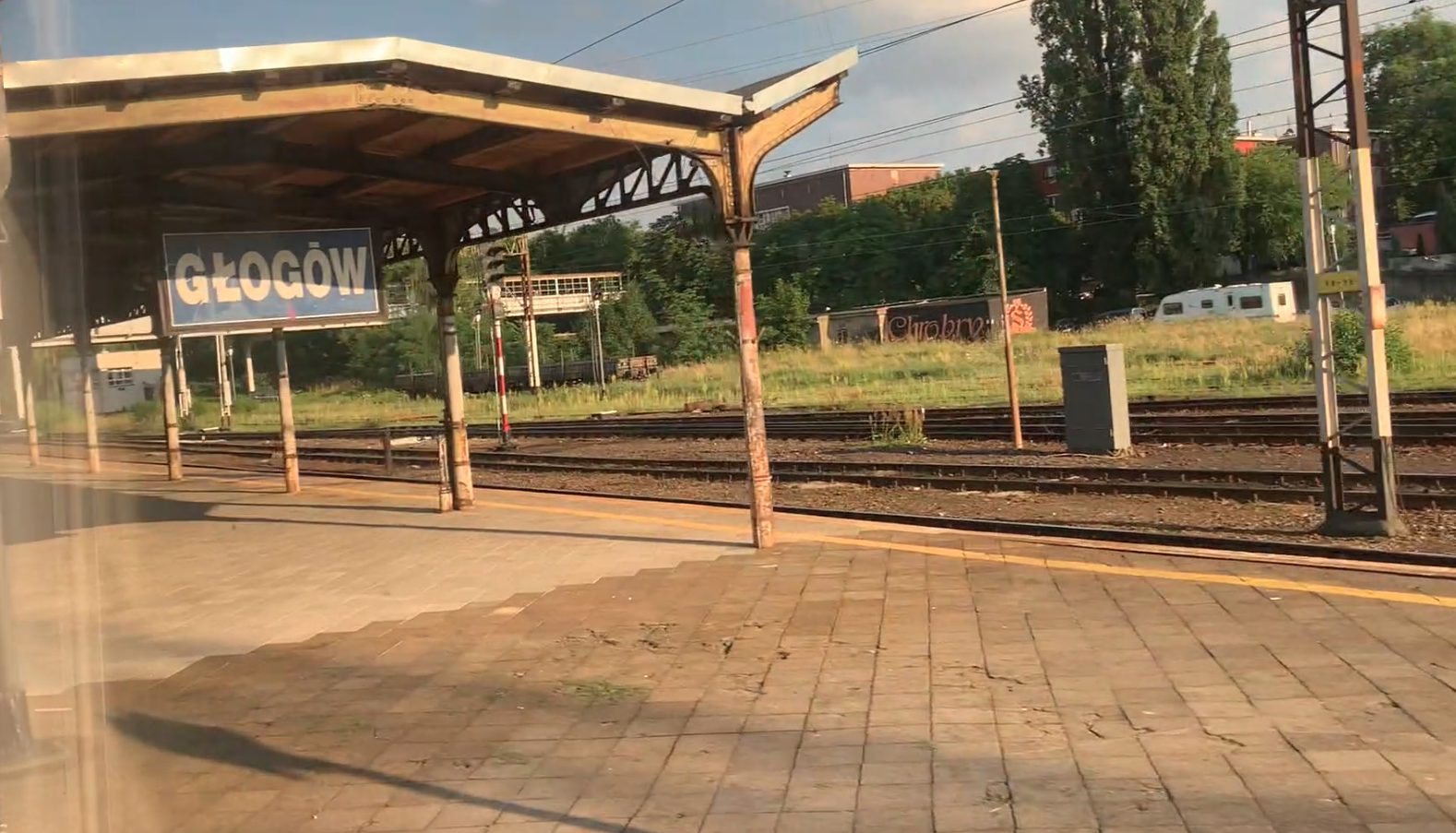
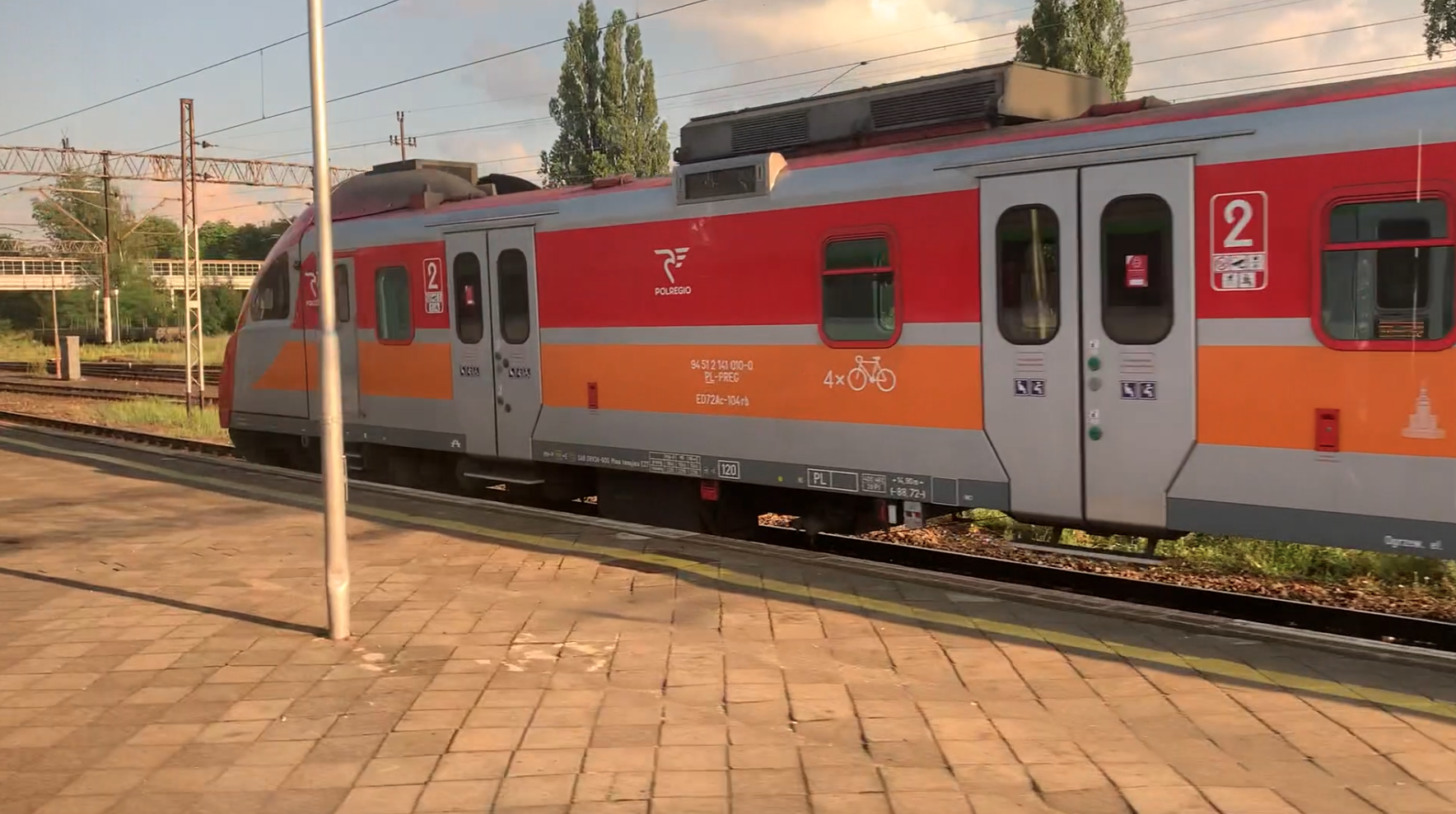
The city of Głogów.
Głogów is a city in Poland located in the Dolnośląskie Province and is the seat of the Głogów County. In 2020, Głogów has a population of 66,120 inhabitants. The geographical coordinates of Głogów are 51 ° 39′33 ″ N 16 ° 04′50 ″ E. The area of Głogów is 35.11 km2. The city is situated in the area of the Legnica - Głogów Copper District. The city develops along the left bank of the Odra River.
A settlement already existed here in the 9th century, on the Tumska Island in the Odra River backwaters. The city was founded by the Silesian Piasts. Głogów received city rights in 1253. The patron of the city is St. Santa Claus. He became the city's patron with the construction of the church of St. Nicholas in the 13th century.
Głogów in Latin is Glogovia, in German it is Glogau, and in Czech Hlohov. The name refers to a thorn or thorn, and ultimately a hawthorn bush. As early as the 13th century, the city was said to be the city of hawthorn. Over the following centuries, the name evolved into various spellings. Even in German from the 18th century onwards, the city's name was spelled Glogow.
Nobody disputes that Głogów was founded as one of the oldest Polish settlements by the Slavic tribe of Dziadoszan. Mieszko I expanded the stronghold in Ostrów Tumski. Many times Głogów tried to conquer the German tribes. For many years Głogów was the capital of the Duchy of Głogów. In the 13th century, the first brick fortified castle was built here. After the Silesian Piast dynasty, the Jagiellonians ruled in Głogów. After the Jagiellons, the city came under the rule of the Habsburgs. In the 17th century, during the Thirty Years' War, Głogów was destroyed by Prussian, French, Russian, Swedish and Austrian troops.
The fortifications of the city of Głogów inhibited the city's development for many years. Part of the fortifications was removed at the end of the 18th century. The first industry to develop in Głogów was printing. In the 19th century, a factory for furnaces, machines, clocks and a brewery were opened in the city.
In the period from February 11 to April 1, 1945, during the fratricidal fights between Russia and Germany, Głogów was 95% destroyed. The Old Town is 100% ruined. Only in September 1945, the Russians handed over the city to the Polish administration. As early as May 1945, Poles came to Głogów, occupying most of the ruins. The Old Town has not been completely rebuilt to date (2022). The development of the city began in 1967, when decisions were made to build a copper smelter.
Aviation in Głogów.
There is no airport in Głogów. The vicinity of Głogów is also an aviation desert. The closest are three aeroclub airports: Lubin (37 km), Leszno (44 km) and Zielona Góra - Przylep (57 km). Private landing pads are located in Lasocin, Przyborów and Dąbrowno. There is also a hang-glider landing site in Góra east of Głogów. All landing sites are located more than 30 km from Głogów.
In the times of the Polish People's Republic (the presence of Russian troops in Poland), military trains departed from Głogów to Szprotawa, which served a large Russian airport near Szprotawa. Distance: 43 km. Geographic coordinates of 51.33N 15.35E.
There was also a military airport in the village of Łysiny near Wschowa. The airport in the village of Łysiny was established in the period 1954 - 1955 by the Polish Army as a field / reserve airport. The airport was 22 km away from Głogów by the provincial road No. 278. Geographic coordinates: 51.82N 16.20E. Its surface (grass) was as much as 2,000 m long. In 1956, the airport was handed over to the Russian army. The Russians used them for helicopter exercises until the end of the 1980s. It was planned to build RWY with a concrete surface here, but the works were not completed. After the withdrawal of Russian troops from Poland in 1993, the airport was handed over to the Polish Army, which handed over the area to the State Forests Enterprise.
Road transport.
Głogów has a dense road network. The national road No. 12: Łęknica - Żary - Głogów - Leszno - Kalisz - Radom - Lublin - Berdyszcze (Dorohusk) runs through Głogów. There are provincial roads No .: 292, 319, 329, 330 in Głogów. In Głogów there is the largest road roundabout in Europe, located in the very center of the city.
Głogów Railway Station.
The railway station in Głogów was established in 1846. The first train departed towards Żagań on October 1, 1846. It was the result of the initial omission of Głogów in the standard-gauge railway system. At the Żagań station, the route from Głogów joined the then main route Wrocław - Berlin.
There are four active railway stations within the city's administrative borders: Głogów Station is the main railway station of the city and the region. Głogów Huta station. Krzepów station. Głogów Wróblin station (formerly Wróblin Głogowski). The most important railway line running through Głogów is the international line C-E 59, from Szczecin - Głogów - Wrocław - southern Europe. Its most important, two-track, electrified section Szczecin - Wrocław (railway line No. 273) is 356 km long. It is the so-called "Nadodrzanka". In 1945, the line was No. 242/325, then No. 265/355, and now No. 273.
The second line is the railway line No. 14, leading from Żary through Wschowa to Leszno. In 1945, the line was No. 312/322, then No. 350, and now No. 14. It is non-electrified, but in operation. Line No. 14 starts at the Łódź Kaliska station and runs westwards to the Polish border (388.58 km) and further into Germany. The line is single-track and double-track and partially electrified. There is the SHP system on it. The individual sections of the trail were built in the times of Prussia and the Duchy of Warsaw gradually, as fragments of different lines. The first episode was the Głogów - Żagań section, i.e. in the western part of Lower Silesia, launched on October 1, 1846. The investor was the Lower Silesian Side Railway. The section to Leszno was launched on May 18, 1858. At the same time, a railway bridge over the Odra River in Głogów was opened. The investor was the Wrocławsko - Poznańsko - Głogowska Railway. On December 31, 1871, the Żagań - Żary section was launched and further to Forst in the German Federal Republic. On October 1, 1888, a railway route was launched from Leszno to Ostrów Wielkopolski and to Skalmierzyce, on February 14, 1896, on the then German-Russian border. Interestingly, in the Duchy of Warsaw to Łódź Kaliska, the Russians built two tracks. One with a track of 1,435 mm (standard gauge) and 1,524 mm (wide gauge).
Railway route No.372.
In 1945, the line was No. 317, then No. 354, and now No. 372.
On December 4, 1885, the railway line No. 372 was opened. The line led to Góra Śląska and further to Bojanów. East direction. It connected the following stations: Odrzycko, Serby East, Wików Głogowski, Drożyna, Niechlów, and Strumenna. After the Second World War, the line was rebuilt. Local, cargo and passenger traffic was conducted there. Passenger traffic was stopped there in 1991. Occasional cargo traffic continued until 2010. Due to the construction of the road no. S5, near Bojanów, a part of the track was pulled down, because the viaduct had not been built. The route is planned to be revitalized, which will involve the construction of a railway viaduct over the S5 road.
Railway route No. 305.
In 1945, the line was No. 322, then No. 347, and now No. 305.
On October 1, 1913, the railway line No. 305, 42.50 km long, was opened. It was a line leading to Sława Śląska and further to Kolsko. After the Second World War, the line was rebuilt. On January 1, 1991, the line for passenger traffic Grodziec Mały - Sława Śląska was closed, and on January 1, 1993, passenger traffic on the section Sława Śląska - Kolsko. Freight traffic was stopped in 2000. In 2001, decisions were made to liquidate the line.
Głogów station.
Initially, the railway station in Głogów was wooden. Established in 1846, the station was located in the area of the current railway sidings on the eastern side of the present overground crossing over the tracks at Elektryczna and Krochmalna Streets. The station will burn down twice in 1862 and 1892. Then the station was moved to the eastern part of the station on the present Platform 2. A modern station in a modernist style was built in 1935. The station was built on the southern part of the station at 1 Maja Street and 1000 lecia Square. The post office was also located here, and after 1945, the Polish Post.
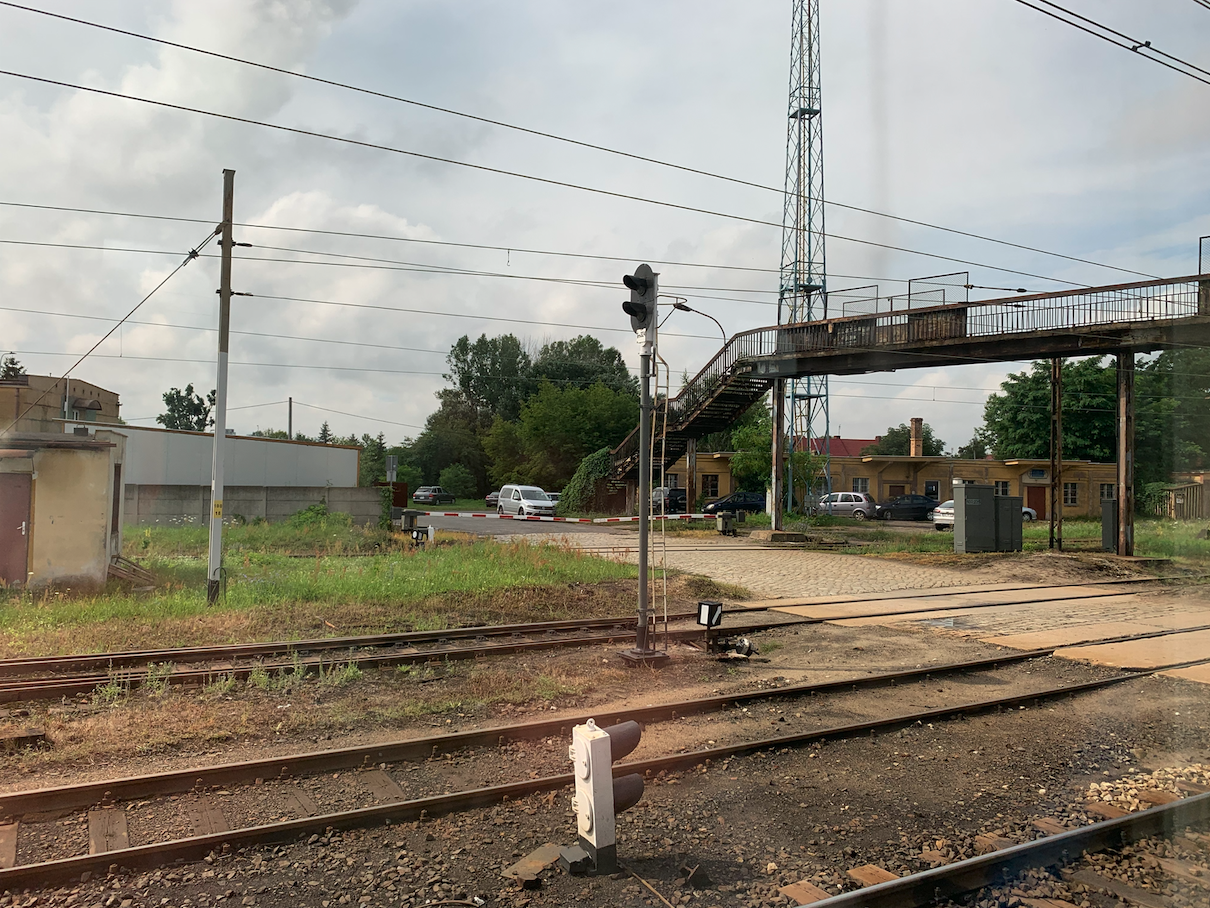
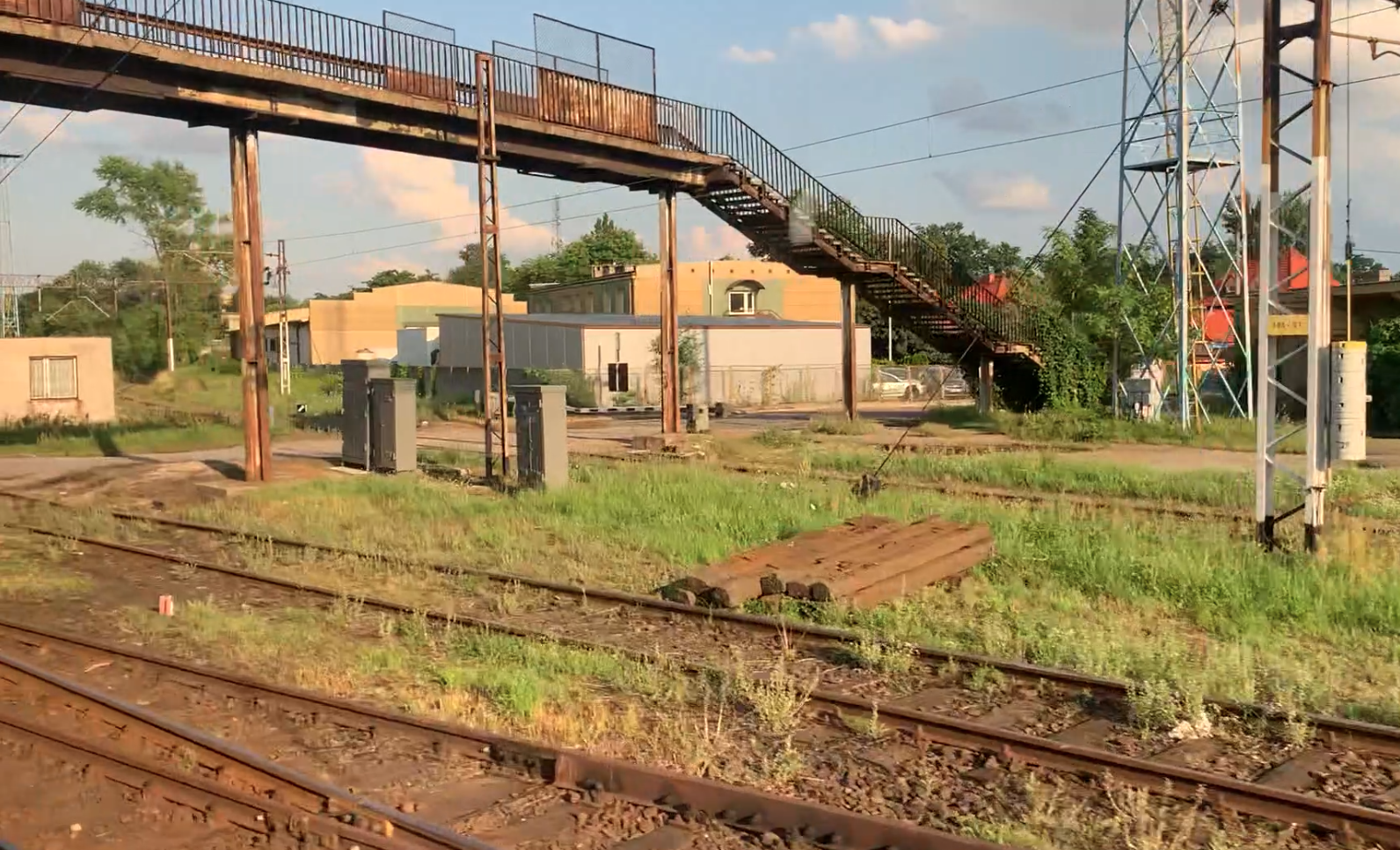
Due to the terrain of the station building, two overground passages were made. These passages are completely built up like factory passages. These are steel structures with a roof and glass walls. The passage on the west side is used by travelers to get to four platforms. The passage from the east side only reaches to Platform 2 and is a postal and luggage passage. In 2019, a comprehensive renovation of the footbridge for travelers was carried out. Passenger lifts have been installed. New lighting was installed, a new anti-skid surface was installed, information in Braille was installed, new glazing was installed and painted with a new color scheme. At the same time, the second, unused postal and luggage footbridge was dismantled. The cost of the changes was PLN 4.4 million.
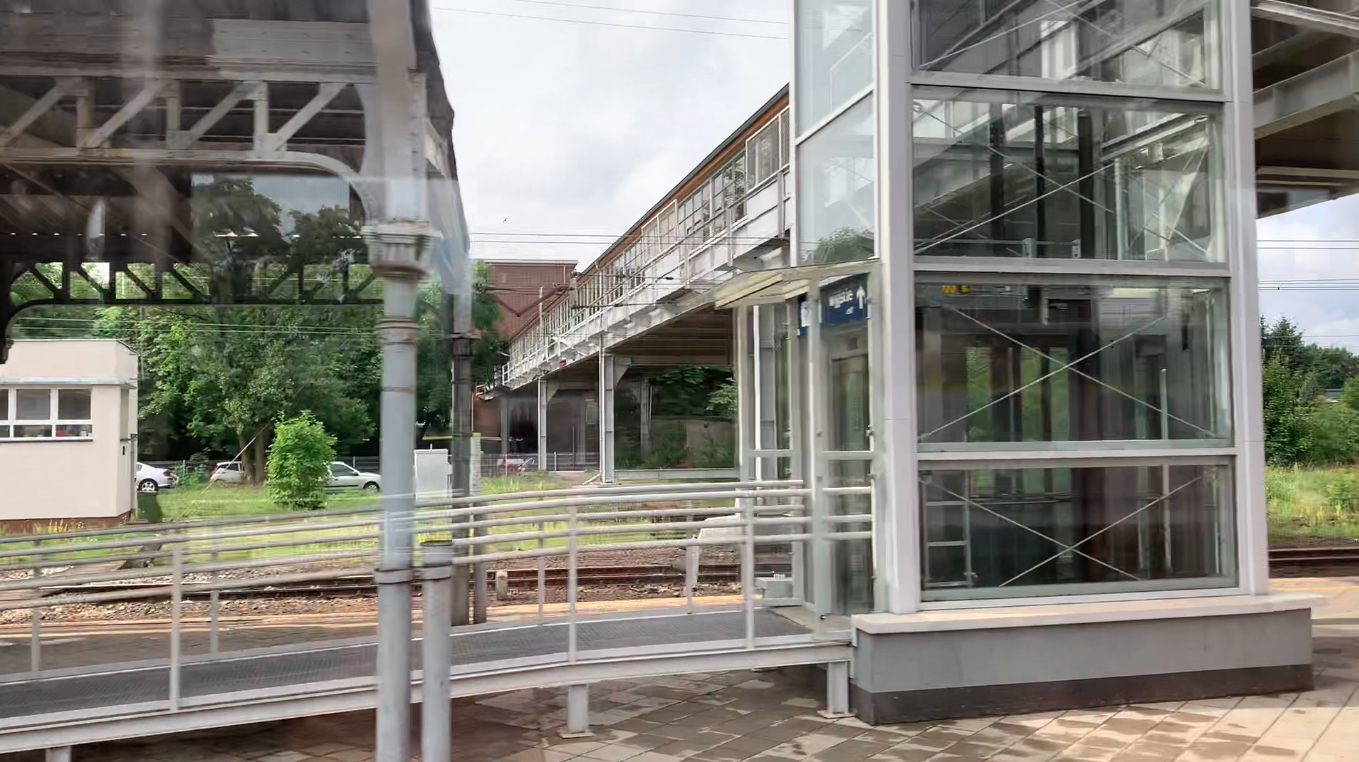
In the 1930s, four high platforms were built.
After the war damage, the station building was rebuilt in 1959. Today, the station building is still used by travelers. The building is well-kept and periodically renovated. The last major renovation of the station was completed in 2013. There are ticket offices, waiting room, food kiosks and shops here. On February 5, 2020, ticket machines of Koleje Dolnośląskie were installed.
In 1945, heavy fighting took place for the station. The Russians did not occupy the station until March 30, 1945. The station was destroyed in about 40%; train station, bridges; passenger and freight, depot. Both water towers were destroyed. Reconstruction of the war damages continued in 1960. The track system was rebuilt in 80%.
It is worth mentioning that the railway bridges on the Odra River were not rebuilt until 1950. As a result, the Odrzycko and Grodziec Mały stations were the railway junction on the right bank of the Oder. There were three railway lines here: No. 312 to Leszno, No. 317 to Góra Śląska and Bojanów, and No. 322 to Kolsko. (1945 line numbers).
In the 1960s, Głogów station was a large railway junction. There were large rolling stock repair workshops. There was a depot with a steam locomotive turntable. Numerous freight tracks serving the copper smelter and other production plants. The KGHM Polska Miedź combine has a large track system, which is served by the Wróblin Głogowski railway station. PKP also operates sidings of large plants of Famaba SA, a construction machinery factory.
Around 1975, the route No. 273 was electrified. So the Głogów station is partially electrified. Route No. 14 remained non-electrified. Platform 1 and Platform 2 serve trains on route No. 273 towards Zielona Góra and Wrocław. Both platforms are covered. The original pre-war pavement can be seen on the platforms. Platform 3 and Platform 4 serves local trains to Leszno and Żagań. They are not covered. The semaphores at the Głogów station are luminous. The shaped semaphores were destroyed during the war. All control rooms at the station were built or rebuilt after 1945. There has never been an underpass at the Głogów station. There is one underpass near the station, under the tracks, from Potsdamska Street to Topolowa Street. However, due to frequent flooding and poor technical condition, it was permanently closed.
In 2019, the Głogów station served approximately 1,500 passengers a day.
Platforms.
Platform 1 and Platform 2 serve trains on route No. 273 towards Zielona Góra and Wrocław. On March 13, 2020, two elevators were put into use at Platforms 1 and 2 for passengers. Platform 1 is 320 m long. Its shape changes with its length. The platform is covered with a historic structure. On Platform 1 you can see the original pre-war surface. Platform 2 is 370 m long and is the widest platform in Głogów. Here was the station building. Platform 2 is also covered. The roof is original from the 1930s.
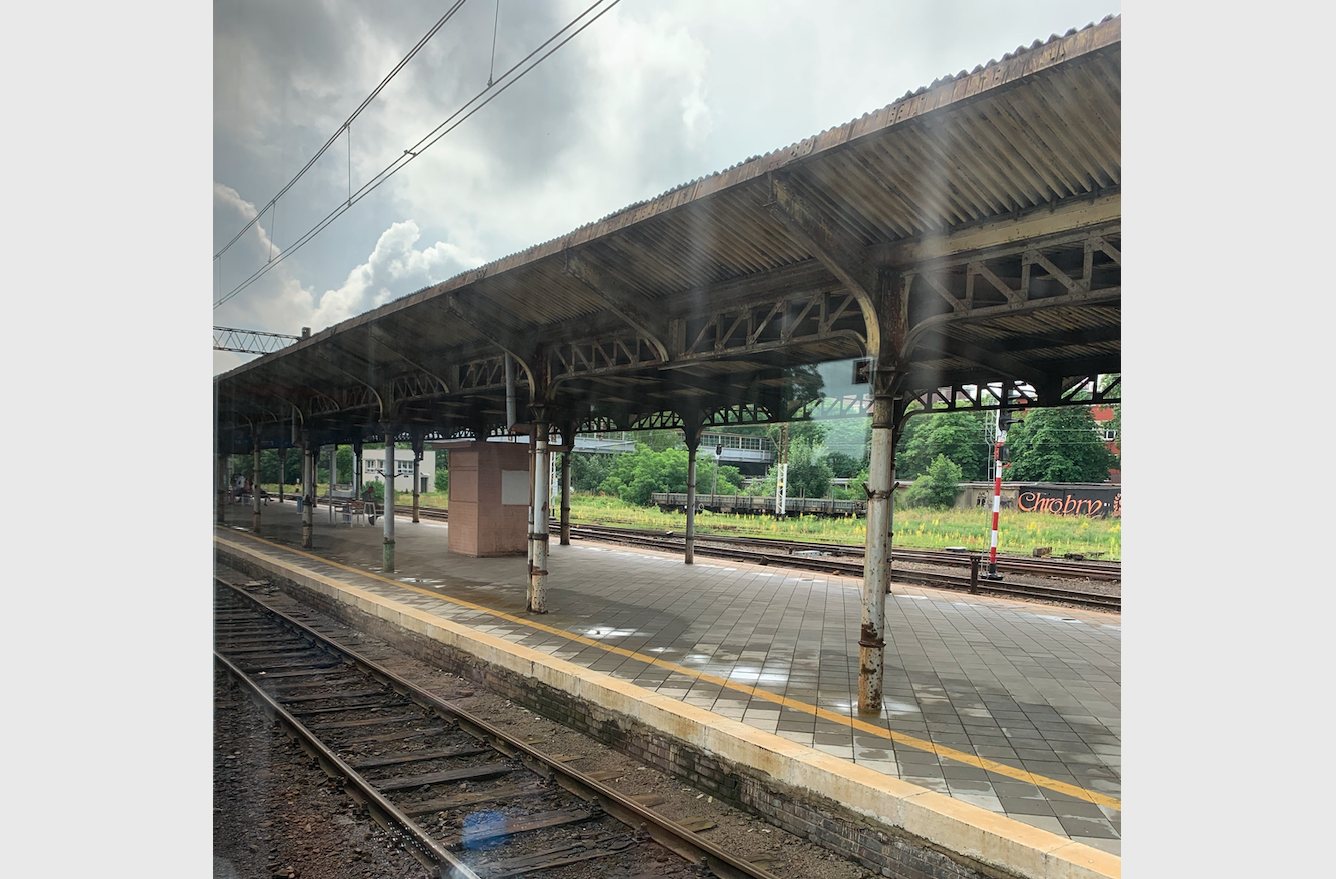
Platform 3 and Platform 4 serves local trains to Leszno and Żagań. They are not roofed and the tracks are not electrified. Platform 3 is single-edged. Serves trains from the track on the north side. Its length is 345 m. Platform 3 served the traffic from Forst-Baršć - Leszno - Krotoszyn - Ostrów Wielkopolski - Łódź Kaliska. Platform 4 is two-edged and 180 m long. Platform 4 handles the movement of local trains to Wschowa, Leszno, Nowa Sól and Zielona Góra.
Railway trader in Głogów.
The railway traditor in Głogów is a characteristic building located on the railway route No. 273, in the north-eastern part of the city. It is situated between the Głogów fortifications and the Odra River. The railway traditor in Głogów is located near Fort Stern, on the Oder river. The facility was built in the period 1881 - 1889. Geographic coordinates: 51.66N, 16.10E.
Tradytor is an element of fortifications intended for side fire. In the fortress there is a combat bunker for cannons to fire in the foreground or between fields. A railway tradytor is a military facility intended for the shelter of armored and other trains, to supplement the supply of the train and the locomotive (carburizing and hydration) that moves the train. The railroad trader is invisible to the attacker. It is also protected against reconnaissance from the air. It is sheltered by adjacent buildings of the fortress, often using crossfire from at least two buildings. The railway traditor is also called the "silent artillery battery" because he enters the fight when the enemy withdraws from the fortress or when the fighting has started inside the fortress.
The railway tradytor in Głogów is a multi-chamber and two-story building. Everything is made of brick and reinforced concrete. There are ammunition warehouses, a coal depot, a water reservoir, food depots and social facilities. The entrance from the Rudno - Gwizdanów side was equipped with steel gates. It was possible to hide armored, cargo, passenger and special trains in the facility. The facility was seriously damaged in the spring of 1945, during the German-Russian fights. There are two railway tracks in the facility. The track from the side of the Odra River is in use, and the track from the city side is currently impassable (2021). The reinforced concrete structure requires repair or demolition.
Written by Karol Placha Hetman
